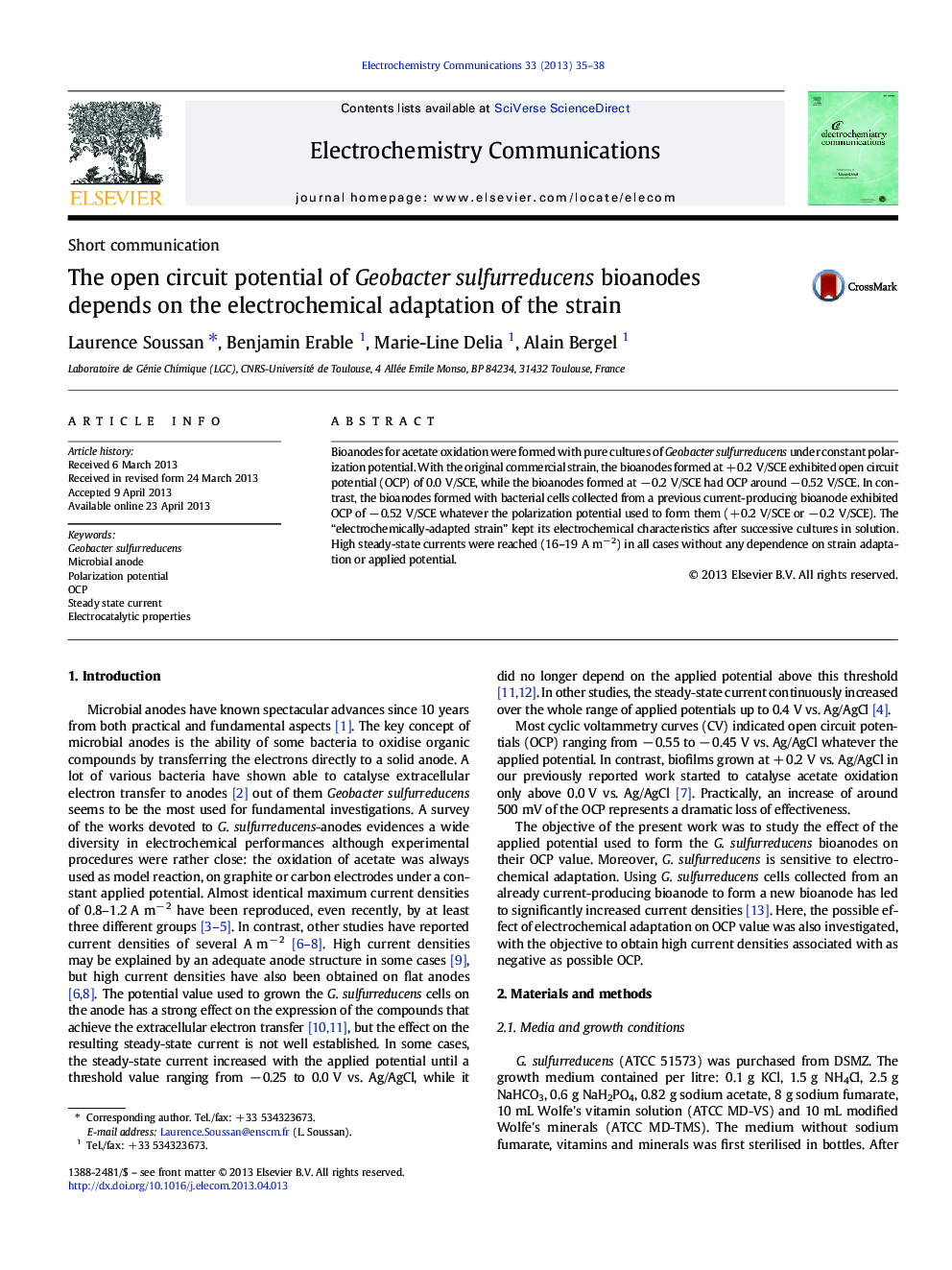| Article ID | Journal | Published Year | Pages | File Type |
|---|---|---|---|---|
| 179253 | Electrochemistry Communications | 2013 | 4 Pages |
•Geobacter sulfurreducens-anodes were formed at different polarization potentials.•The OCP of the initial bioanodes depended on the polarization potential (Vp).•A “biofilm strain” was obtained after one culture on an anode at − 0.2 V/SCE.•The “biofilm strain” showed identical electrocatalytic properties whatever the Vp.•The “biofilm strain” kept its electrocatalytic properties in a permanent way.
Bioanodes for acetate oxidation were formed with pure cultures of Geobacter sulfurreducens under constant polarization potential. With the original commercial strain, the bioanodes formed at + 0.2 V/SCE exhibited open circuit potential (OCP) of 0.0 V/SCE, while the bioanodes formed at − 0.2 V/SCE had OCP around − 0.52 V/SCE. In contrast, the bioanodes formed with bacterial cells collected from a previous current-producing bioanode exhibited OCP of − 0.52 V/SCE whatever the polarization potential used to form them (+ 0.2 V/SCE or − 0.2 V/SCE). The “electrochemically-adapted strain” kept its electrochemical characteristics after successive cultures in solution. High steady-state currents were reached (16–19 A m− 2) in all cases without any dependence on strain adaptation or applied potential.
